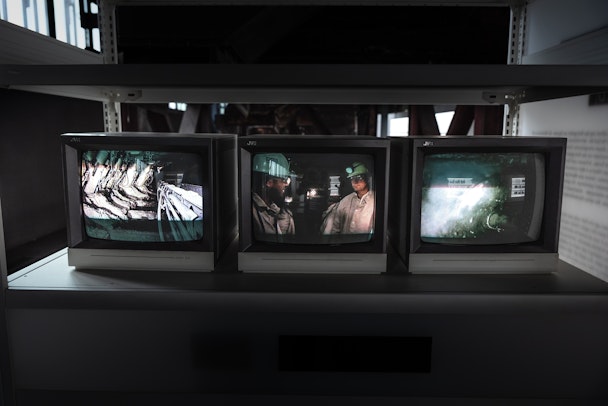The show must stream on: reshaping the TV landscape for a post-pandemic audience
As restrictions ease and society tentatively returns to a new form of normality, the time feels right to reflect and explore how a new era of post-pandemic TV will unfold. Has Covid-19 radically remoulded the industry for good? How will viewers navigate varying streaming platforms as freedoms ensue? Could previously favoured genres shift to suit a new mood of digital consumption? Additionally, how will OTT platforms adapt and evolve? Let’s dive in.

The reigning lockdown saviour was undoubtedly a deluge of daily TV binges, teamed with back-to-back streaming. As productions halted in their tracks mid-shoot, the hunger from viewers for fresh and innovative content gained major momentum. While audiences settled down for their habitual dose of much-needed escapism, ratings skyrocketed, and new user subscriptions surged.
A recent Radio Times poll found that, on average, people watched 31 hours of TV each week throughout lockdown, with 60% of participants watching an increased number of movies and series last year. Plus, Broadcast revealed that despite the distinct rise in SVoD subscriptions, both daytime and peak viewing figures were up and have remained so over the last year. Similarly, BARB measured that alongside booming year-on-year ratings, afternoon ratings surged, as an abundance of furloughed staff altered their viewing routines.
Nostalgia also played a big part. Alongside the heightened need for new and original additions to the watchlist (namely The Last Dance, Normal People, The Queen’s Gambit and Tiger King), viewers found equal comfort in rewatching old favourites, with many finding soothing solace in shows they’d already seen on multiple occasions.
Audiences repeatedly watched ‘90s and ‘00s classics, including Friends, The Fresh Prince of Bel-Air, Only Fools & Horses and Frasier, in a bid to banish feelings of stress and anxiety. The latter, all understandably induced by harrowing headlines and a global health emergency. Instead, viewers opted for blissful, 30-minute streams, that would most certainly surround a feelgood plot, not so easily witnessed within the real world.
Interestingly, viewing figures for these nostalgic shows have remained steady, without stay-at-home orders, which poses the question: do people still feel uneasy about the current situation, choosing to retreat into the safety of nostalgia, sooner than the unsettling resurgence of commuting routines and social settings? Or is it more of a case for an oldie but a goodie?
Shared viewing experience
With today’s never-ending choice of premium television to select from, it comes as no surprise that the driving force for show popularity, often centres around online conservation. For example, if a show is trending, the community builds through curiosity, as viewers want to feel a part of it. Equally, likeminded fans immediately head to social platforms to dissect the latest episode or season finale.
A study by Thinkbox and Ipsos MORI discovered that shared TV viewing throughout lockdown heightened by 30% within households, finding that a feeling of connection and bonding over shows in real life was just as important as online conversation. However, the overriding benefit stemmed back to breaking the monotony, with 62% of UK adults stating that TV relieved boredom.
It’s clear that the juggernaut of streaming and its recent growth shows no signs of slowing, which allows for predictions on the future of TV. Dynamic digitalisation and CTV have uncovered a whole new world of personalisation and measurement. This could mean that subscribers will be able to choose curated packages based on their watching preferences, minus the genres that are irrelevant to them.
The power of the algorithm
In the quest to keep show recommendations sharply on point, enhanced algorithms and data collection are likely to become more elaborate. Slick personalisation and data intelligence will also welcome increased monetising options, primarily for advertisers who are keen to adopt consumer precision with targeted, shoppable abilities, previously not seen on traditional TV.
The user experience will become paramount to create a completely bespoke viewing journey, which could enable broadcast TV to keep up with OTT. Original content productions are also set to be a key focus, with substantial viewing figures seen, particularly for Netflix, over the past year. Could interactive, smart content become a big player, too? The possibilities of technology advancements are endless, so watch this VR space.
The future of cinema could also be at a significant turning point, since movie releases landed on Sky, Amazon Prime and Disney+, during 2020 and beyond. The new era could see films launching in theatres and in homes, at the same time. It’s yet to be seen if the variations can exist harmoniously together, or whether audiences will lean towards the joy of the full cinema experience, or the homely convenience of online viewing.
Does the TV forecast look bright? As Bill Gates once said, ‘content is king’ and this is set to remain. Especially if the global giants, Amazon, Apple and Netflix continue to rival broadcast with original productions. Last year, the seismic shift towards the powers of streaming and instantaneous access, delivered directly to devices at any time, took full hold. However, the pandemic also reminded us that broadcast news channels, a source of trusted information and authenticity, always endure the storm, with news ratings rising by 45% overall during lockdown, according to research by BARB.
The TV marketplace is growing with plenty of new branches, but which are set to flourish and who will take the supporting role? With new viewing behaviours and immediacy taking precedence, traditional broadcast will have to shake things up to compete with engagement and the decade of the stream.
Talia Levine, AB member at Paradise & commercial director broadcast
Content by The Drum Network member:

Paradise
Paradise London is an independent fully-integrated creative agency dedicated to enhancing, connecting and refining brands worldwide.
Find out more
